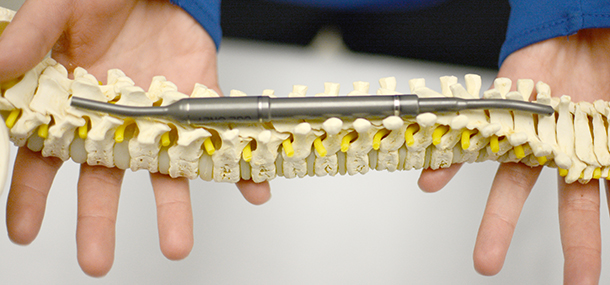MAGEC, or MAGnetic Expansion Control spinal growing rod, is an FDA-approved, non-invasive treatment for children with scoliosis. An adjustable growing rod is a tool used for patients under 10 years of age whose scoliotic curvature is greater than 50 degrees, which is too significant for bracing or casting. The rod is used to stop progression of the spinal curve and to straighten the spine.
MAGEC rods are surgically attached to the spine on both the left and right sides, above and below the curve. The rods are inserted through two small incisions in the patient’s back. The surgery takes about two hours.
After surgery, each rod is adjusted independently during follow-up procedures. This is called distraction and simply means lengthening. Distractions are scheduled based on the patient’s growth. The adjustable rods allow the spine to grow while minimizing the progression of the scoliotic curve. Distractions are done until rod removal, which is traditionally at the point when the patient has stopped growing or has reached the maximum benefit with the rods.
Where traditional treatment uses rods that require multiple surgeries to lengthen the rods as the child grows, the MAGEC rod is magnetic and is controlled using an external remote control, thereby eliminating additional expansion surgeries. Instead, the rods are lengthened every three to four months by activating the magnet via remote, which expands the rods. The procedure is painless and takes just a few minutes. This means less time away from doing the things your child loves to do.
With this less invasive procedure, patients require fewer surgeries, have decreased complications from repetitive surgeries, and both parents and children have less anxiety associated with the surgical procedures. Your child will leave the hospital with the ability to do most of their normal activities; although gymnastics, trampolines, and skateboarding should be avoided.
MAGEC rods benefit children with scoliosis by straightening and stabilizing the spine as the child grows. They are better than traditional rods because they require fewer surgeries and are less invasive, which minimizes risks of infection and those associated with general anesthesia, while allowing children to recover quicker after each lengthening procedure.


